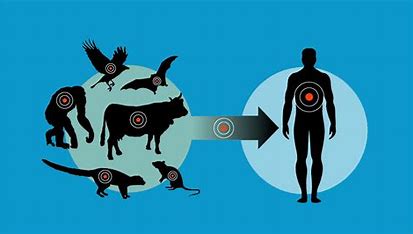Introduction
Zoonotic diseases, also known as zoonoses, are infectious diseases that can be transmitted between animals and humans. These diseases have been a significant concern throughout history and continue to pose a global public health threat. In this article, we will explore the concept of zoonotic diseases, their transmission pathways, examples of common zoonoses, and the importance of addressing them to protect both animal and human health.
Understanding Zoonotic Diseases
Zoonotic diseases are caused by pathogens, including bacteria, viruses, parasites, and fungi, that can be transmitted between animals and humans. The term “zoonosis” originates from the Greek words “zoon” (animal) and “nosos” (disease), reflecting the close relationship between animals and the transmission of diseases to humans. Zoonotic diseases can be acquired through various routes, including direct contact with animals, consumption of contaminated food or water, bites from infected animals, and exposure to vectors such as mosquitoes or ticks.
Transmission Pathways of Zoonotic Diseases
- Direct Contact: Some zoonoses can be transmitted through direct contact with infected animals. This includes touching or handling infected animals, bites or scratches, or exposure to bodily fluids or tissues.
- Foodborne Transmission: Zoonotic diseases can be acquired through the consumption of contaminated food or water. This can happen when animal products, such as meat, eggs, or milk, are not properly cooked or handled, allowing pathogens to survive and infect humans.
- Vector-Borne Transmission: Certain zoonoses rely on vectors, such as mosquitoes or ticks, to transmit the disease between animals and humans. These vectors can carry pathogens from infected animals and transfer them to humans through bites.
- Environmental Transmission: Some zoonotic diseases can be acquired through environmental exposure to contaminated soil, water, or surfaces. Pathogens present in animal waste or contaminated environments can infect humans who come into contact with them.
Examples of Zoonotic Diseases
- Rabies: Rabies is a viral zoonotic disease transmitted through the bite or scratch of an infected animal, most commonly dogs. It affects the central nervous system and is almost always fatal if left untreated.
- Avian Influenza: Avian influenza, or bird flu, is a viral zoonotic disease that primarily affects birds. However, certain strains can be transmitted to humans through close contact with infected birds or their contaminated environments. Human infections can range from mild respiratory illness to severe respiratory distress.
- Lyme Disease: Lyme disease is a bacterial zoonotic disease transmitted to humans through the bite of infected ticks. It can cause symptoms such as fever, fatigue, joint pain, and neurological problems if left untreated.
- Salmonellosis: Salmonellosis is a bacterial zoonotic disease commonly associated with contaminated food, particularly raw or undercooked eggs, poultry, or meat. It can cause gastrointestinal symptoms such as diarrhea, abdominal pain, and fever.
Importance of Addressing Zoonotic Diseases
Zoonotic diseases have significant implications for both animal and human health. Addressing these diseases is crucial for several reasons:
- Public Health Impact: Zoonoses can cause widespread illness, leading to increased morbidity and mortality in human populations. By preventing and controlling zoonotic diseases, we can protect public health and reduce the burden on healthcare systems.
- One Health Approach: Zoonotic diseases highlight the interconnectedness of human, animal, and environmental health. Adopting a One Health approach that recognizes the interdependence of these sectors is essential for effective disease surveillance, prevention, and control.
- Economic Consequences: Zoonotic diseases can have severe economic impacts, particularly in agricultural and livestock industries. Outbreaks of zoonotic diseases can result in trade restrictions, livestock culling, and reduced productivity, leading to economic losses.
- Emerging Infectious Diseases: Many zoonotic diseases have the potential to emerge as new threats to human health. Monitoring and addressing zoonotic diseases can help identify emerging pathogens and prevent their spread to humans.
Conclusion
Zoonotic diseases represent an ongoing challenge to global health. Understanding the transmission pathways, examples of zoonoses, and the importance of addressing these diseases is crucial for effective prevention and control. By promoting collaboration between human and animal health sectors, implementing surveillance systems, improving food safety measures, and raising awareness among the public and healthcare professionals, we can mitigate the impact of zoonotic diseases, protect both animal and human health, and work towards a healthier and safer future.

